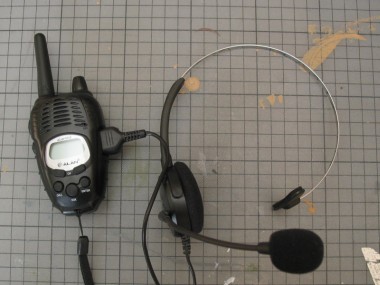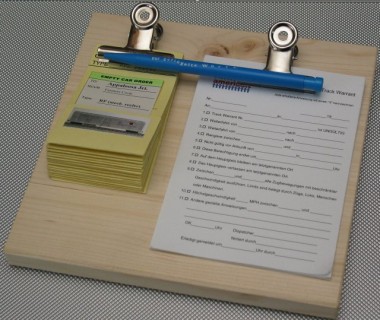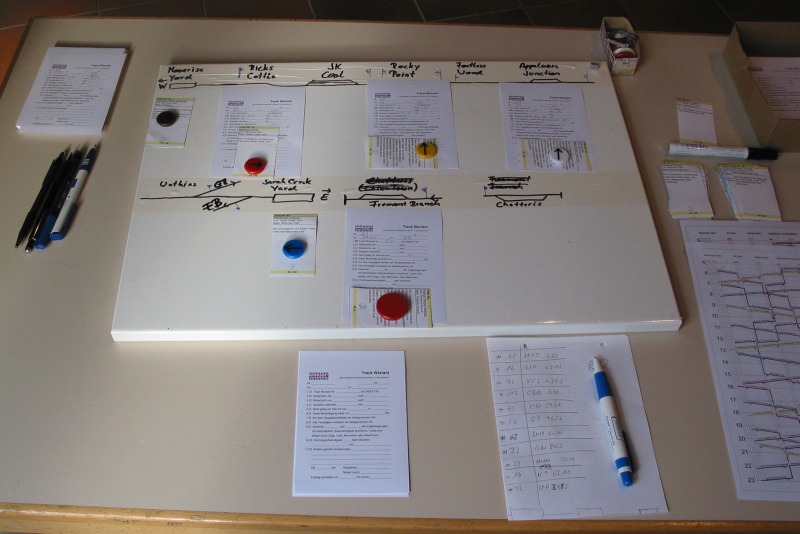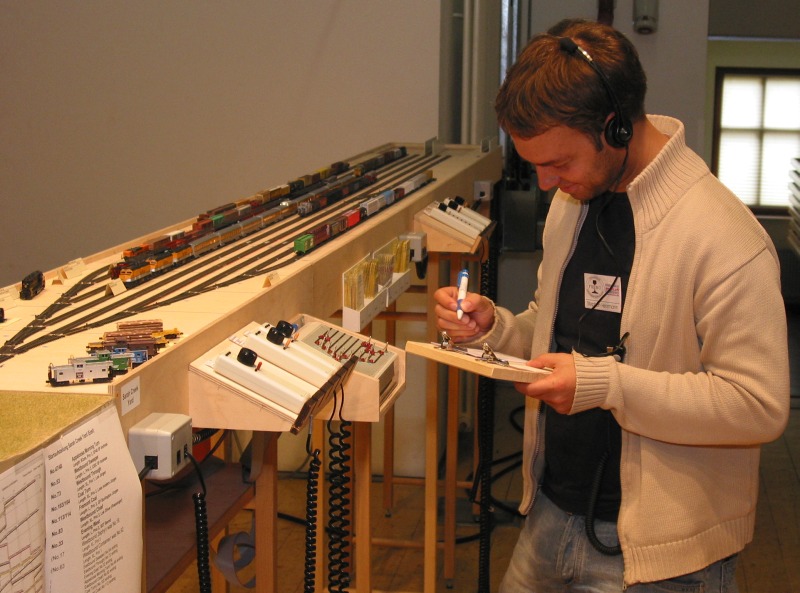Operation: Railroad Model (english)
americaN: Track Warrant Control (us)
- Details
- Kategorie: Operation: Railroad Model (english)
- Zuletzt aktualisiert: Samstag, 19. Dezember 2009 12:55
- Geschrieben von Bernd Schneider / mh
Track Warrant Control | |
TWC at the prototype
Up to now, in USA there are many railroad lines without any signaling. These lines are called dark territory, and there are some different ways to assure security. Since the invention of telegraphs, and until dependable radio transmission was developed in the seventies, the traffic in dark territory was dispatched by Time Table and Train Order.
After implementation of railroad radio, and after decline of passenger service, the traffic in not signaled areas changed to Track Warrant Control or Direct Traffic Control.Track Warrant Control (TWC in the following) seems to be the ideal way to allow flexible operations on americaN module arrangements.Before going into the details how TWC is adopted to americaN, we want to give you three sources for TWC:- In chapter 14, Rules Applicable Only Within Track Warrant Control (TWC) Limits, General Code of Operating Rules, the rules for TWC are described. You can find the GCOR of Alaska Railroad Corporation here: ARRC-GCOR2000 (PDF, ca. 800 kB)
- As standards are, the GCOR is not easy reading. To get information what this means for operations, you can get scenarios at the homepage of Carsten S. Lundsten: http://www.lundsten.dk/us_signaling/twc/
- Additional information in German language you can get in Jörn Pachl: "Übertragbarkeit US-amerikanischer Betriebsverfahren auf europäische Verhältnisse", published in „Eisenbahntechnischen Rundschau“ #07/2001 ETR_0701 (PDF, ca. 700 kB).
Track Warrant Control at Model Railroads
To explain how we use TWC at americaN, we have published a short reference in German language. There you find a description- the basics of TWC
- how we use our Track Warrant form
- how our radio communication works
 |  |
Radio equipment: | Board for conductor, |
Radio communication -between dispatcher and train crews- and track warrant forms are the most important hardware to use TWC at a railroad model. At americaN, as train crews we always have an engineer, who often supported by a conductor.
To walk besides the train with track warrants and car cards, each train crew is using a conductor board. For communication, we use the private mobile radios (which can be used without license and without communication fees in Germany).We tried out some brands, and now we use the comfortable ones Alan 443 with headsets Midland MA35-N. Both together we bought for around 67 EUR.
At real railroads, each track warrant is checked for safety reasons by a computer system before it is transmitted to a train crew. If the new track warrant would be in conflict with other track warrants still valid, a security check by the computer would detect it and would warn the dispatcher.At americaN, the dispatcher has no security assistance by a computer. Therefore, he himself has to make sure that the trains are running under safe conditions. A good working place for the dispatcher is needed. By the way: the dispatcher is sitting at a place where he cannot see the layout, and can only hear the train crews by radio. This adds a lot to the realistic atmosphere!The photo below was shot at the FREMO-meeting in Naumburg 2008. It shows the working table of the dispatcher. There is the schematic track plan penciled onto the magnet board. In front of the board are empty track warrants, on the paper to the right the engine numbers for each train are noted.On the right, you can see the graphical schedule, and above are the job descriptions.The job descriptions are telling the train crews what their job is, what they have to do with the train. For every train there is one job description for the crew, and one for the dispatcher. By the way, we do not use a clock in our system, but let the trains run according the schedule. The graphical schedule is for orientation only. The job descriptions are numbered, and the train crews are called according to the train numbers.

- at he staging yard Moonrise Yard (on top left) a train is ready to depart, but has not got a track warrant yet (black magnet)
- the red magnet holds the track warrant of a train moving eastwards (the arrow on the magnet is showing to the right, which is defined as east)
- at Rocky Point and at Appaloosa Junction trains are switching (the symbol on the yellow and white arrows is showing upwards)
- at the staging yard Sarah Creek Yard a crew was called for a train to move westward.
- at Fremont Branch, a crew is switching.
- if a crew calls the dispatcher and tells that a track warrant is completed, it will be crossed and then put away from the magnet board.
The position on the magnet board tells the dispatcher the position and status of all trains on the arrangement.
If a new track warrant is issued, it will be fixed with the magnet at the new position, and the job description will be moved, too.
By this, the dispatcher can supervise all train movements in his division without much effort on writing and reading.
Michael Homberg has published his field report about dispatching, which he made with another method, here.

Source:
Author: Bernd Schneider, www.america-n.de, (c) 2009, published with permission
translation: mh


